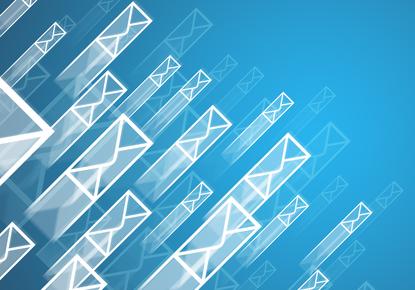Four ways to use email marketing to boost your business
- 17 November, 2015 13:28

With the proliferation of e-commerce platforms and increased competition in the digital retail space, having an effective automated customer communication strategy is critical to boosting brand engagement and increasing customer retention.
CEO of commerce marketing automation company Bronto, Joe Colopy, reveals his top four key tips brands can adopt to ensure their automated communication strategies are relevant, timely and produce the maximum ROI.
Founded in the United States, Bronto helps over 1300 retailers and commerce-driven companies to deliver timely, relevant, data-driven digital marketing that fuels engagement throughout the customer lifecycle and drives more revenue.
Throughout the years, the company has helped multi-channel merchants like Armani Exchange, online retailers such as bhcosmetics, brand manufactures such as Samsonite and more locally, driven revenue for Australian retailer, Culture Kings.
“I’ve been doing this for a long time, so you can see certain trends emerging that make communication with your customers more effective and what works and what doesn’t work,” Colopy told CMO.
Keep it relevant to your customer
At a high level, Colopy stresses a successful email communication line is all about being relevant and understanding when it comes to the customer, there is no one size fits all solution.
“It’s about shifting from the traditional batch and blast, where everyone gets the same thing in mass, to being highly targeted, highly personalised and highly relevant for the consumer,” he explained. “So everyone has a different experience that’s based on who they are, what they’ve purchased, when they’ve purchased something and their profile.”
Colopy stresses the importance of treating customers in a unique way and not to simply blast non-relevant information to them.
“People tune out,” he says. “Or worse, they’ll mark it as spam and it will just dilute the overall quality and reputation of your brand and what you’re about. So keeping things very relevant and measured is extremely important.”
Embrace pop-up signup
One of the easiest and most effective strategies Colopy suggests is to use a pop-up functionality to encourage customers to sign-up to your newsletter as part of an overall attract and retain strategy.
“The reality is not everyone when they come to your website are ready to buy right then and there,” he said. “They want to be engaged in different ways. So keeping people tied into your brand and giving them relevant content, so they buy, or refer to a friend, when they’re ready, is extremely important.”
Having said that, Colopy says you can’t follow the engagement effectively with your customer unless you really know who they are.
“You need to recognise not everyone is ready to convert straight away and you need a lower barrier engagement model, like asking for their email address, or providing a discount or incentive to give their details to you,” he added. “It’s one of the key ways to building your email list and ultimately driving your revenue through follow up engagement.”
Adopt a multi-series engagement strategy.
According to Colopy, when someone purchases an item from your site, or they sign up to receive additional offers, promotions or information through your website, people are just starting their customer life-cycle with you.
“So instead of saying thank you, goodbye, it really is valuable to have a multi-series campaign where you’re engaging them in different ways,” he says.
“So maybe on day 1, you’re educating them on what the brand is about. Then on day 3, you’re educating them about different social media options and how they can connect with you in different ways. Day 5, you’re doing some kind of promotion. The point is, you have a multi-series engagement strategy that’s welcoming them into your VIP program, or into your brand and it’s very thoughtful.”
But not everyone gets the same message at the same time, he says, they get message at the relevant time when they start engaging with your brand.
“It’s about welcoming them into your brand, which is extremely effective in keeping people engaged and ultimately, getting them to buy,” he says.
Be mindful of cart recovery
One of the key ways to leverage automation to ensure customers convert is to closely monitor cart abandonment to help recover potentially lost sales, Colopy says.
“People use the cart, put products in there and then forget about it, or they procrastinate, so there are ways to do follow-up campaigns based on what they’ve purchased or almost purchased,” he adds. “But the individual strategy is all based on the brand.”
But Colopy stresses it’s important to react appropriately and not too hastily or brands could risk looking desperate for a sale, weird or creepy.
“From a Bronto perspective and from an engineering perspective, the engineer might say we can respond to this in only eight seconds,” he says. But from a customer perspective, that could potentially look a little creepy and weird – and we don’t want to do that. You don’t want to present things in an obnoxious or intrusive way.”
There are so many effective subtle ways to leverage email automation to aid cart recovery, Colopy says, with some brands telling you simply to buy whatever is exactly in your cart that you abandoned. Meanwhile other brands give you a gentle reminder saying hey, it looks like you left something in your cart.
“So an effective strategy can be determined through testing and if it is done well with a soft touch, people can be very receptive to it,” he says. “It very much works in terms of ROI as well and pretty effective, without alienating people from your brand.”
Follow CMO on Twitter: @CMOAustralia, take part in the CMO conversation on LinkedIn: CMO ANZ, join us on Facebook: https://www.facebook.com/CMOAustralia, or check us out on Google+: google.com/+CmoAu

